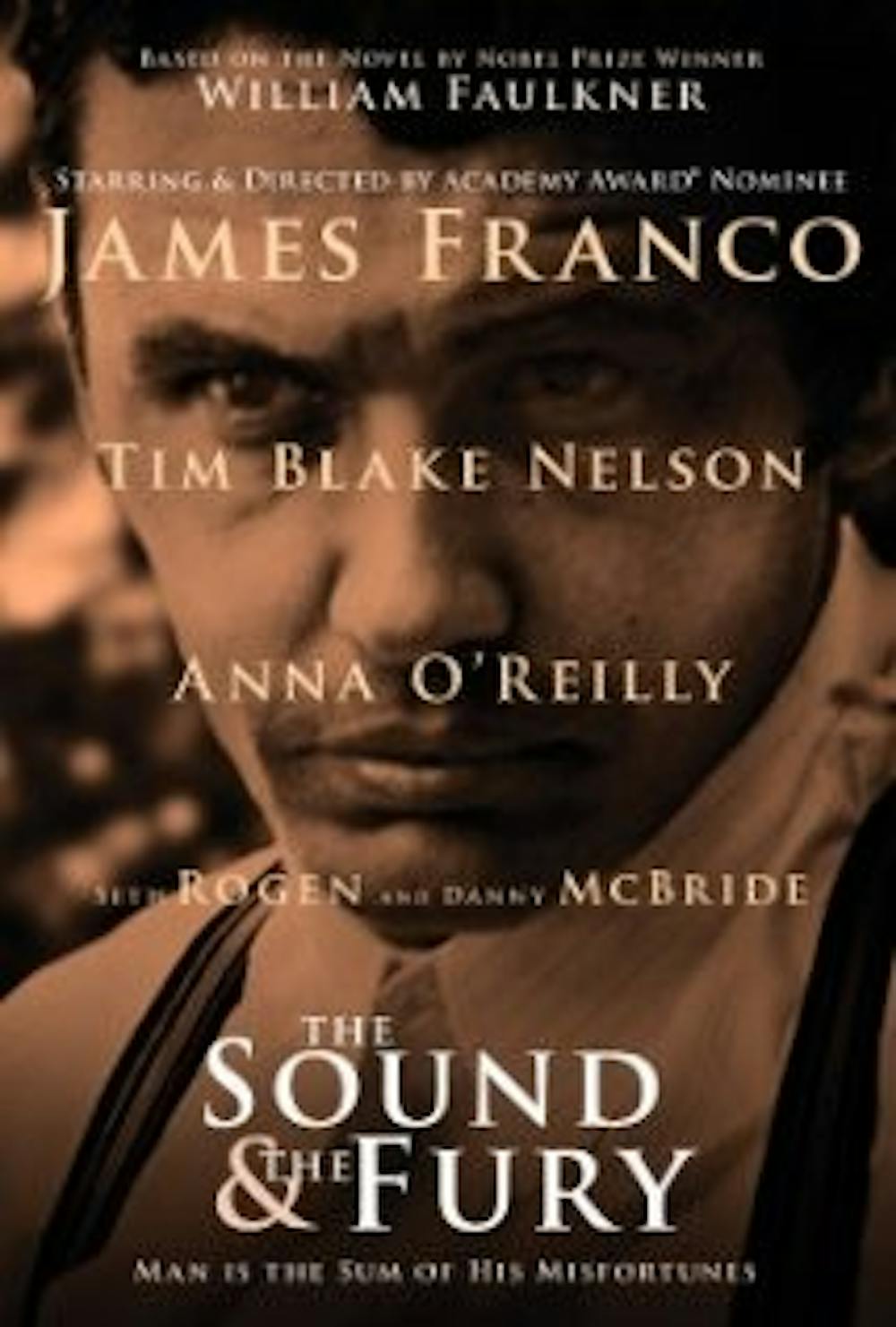In his artful adaptation of William Faulkner’s 1929 novel “The Sound and the Fury,” director James Franco pays homage to the tragic fall of the Compson family, employing creative film techniques to draw attention to the book’s central themes. Franco manages to create a film which honors Faulkner’s best-known novel while standing alone as an impressive cinematographic production.
Set in the fictional town of Jefferson, Mississippi, “The Sound and the Fury” tells the tale of the Compsons, a once-prominent family fallen from the entrenched southern aristocracy. The film illustrates hardships, both internal and external, which befall each member of the Compson family as their status deteriorates with the rest of the south following the Civil War.
The Compson characters each struggle with their own demons — Mrs. Compson (Janet Jones) is a chronic hypochondriac, Mr. Compson (Tim Blake Nelson) struggles with alcoholism — but the story is particularly interested in the family’s four children.
In addition to directing the film, Franco himself plays one of the main characters — the youngest of the four Compson children, mentally disabled Benjy Compson. A central part of the conflict experienced by the family stems from the obsession that Benjy, middle son Jason Compson IV (Scott Haze) and eldest son Quentin Compson (Jacob Loeb) share for their sister, Caddy (Anha O’Reilly). For lack of a nurturing female figure in their lives, the boys turn to Caddy for love and support, and react in extreme ways when she begins to turn her attention to other men in romantic and promiscuous relationships.
Franco’s film is narrated in four parts, the first three each from the point of view of a different Compson brother, and the last in the voice of an outside narrator (in the novel, this is taken to be Faulkner’s own narration). Each shift is sharp and distinct: the screen turns black and the next Compson brother’s name appears in the center of the screen, noting that their perspective is to follow.
In the different parts of his novel, Faulkner experimented with “stream-of-consciousness” writing — a narration technique by which the author writes as if inside the character’s mind. Thus, the “Benjy” part of “The Sound and the Fury” is complicated and difficult to understand due to his mental condition. Franco conducts these transitions masterfully.
Many other subtleties also accentuate the themes of the novel; for example, the entirely of the film seems to have a sort of lens which increases the saturation of all colors and makes the film a more vivid and intense visual experience. This draws attention to the intensity of emotional relationships — how grief and pain and love combine and separate and come together again in ways so complex and tragic that they leave us confused, lost, able only to recognize the sensational intensity of the human experience: what we can hear, what we can see.
Without background knowledge of the novel, the film version may be difficult for audiences to follow. Because viewers are thrown immediately into the heart of the story, with minimal exposition, familiarity with Faulkner’s original version grounds the film.
Regardless, Franco’s adaptation of “The Sound and the Fury” is commendable for its commitment to the themes and structure of the acclaimed novel. It is a successful tribute to the late author, and deserves its own critical acclaim.







